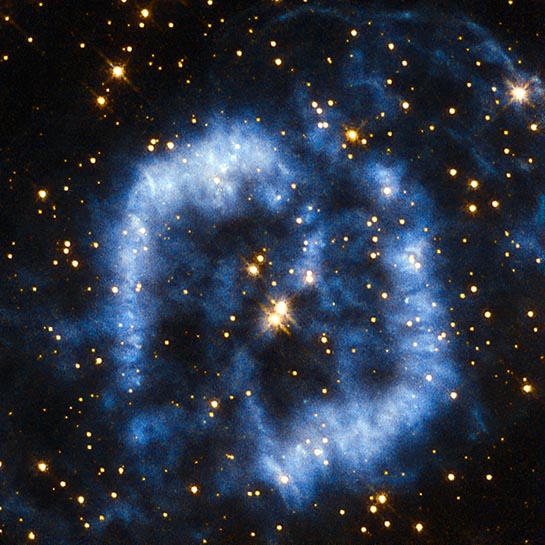
Planetary Nebula
RA 16h 14m 32.68s Dec -54° 57' 2.77"
Norma
0.56 x 0.56 arcminutes
North is 48.3° right of vertical
ESA/Hubble & NASA, Ack: Serge Meunier
October 5, 2015
ABOUT THIS IMAGE:
This planetary nebula is called PK 329-02.2 and is located in the constellation of Norma in the southern sky. It is also sometimes referred to as Menzel 2, or Mz 2, named after the astronomer Donald Menzel who discovered the nebula in 1922.
When stars that are around the mass of the Sun reach their final stages of life, they shed their outer layers into space, which appear as glowing clouds of gas called planetary nebulae. The ejection of mass in stellar burnout is irregular and not symmetrical, so that planetary nebulae can have very complex shapes. In the case of Menzel 2 the nebula forms a winding blue cloud that perfectly aligns with two stars at its center. In 1999 astronomers discovered that the star at the upper right is in fact the central star of the nebula, and the star to the lower left is probably a true physical companion of the central star.
For
tens of thousands of years the stellar core will be cocooned in spectacular
clouds of gas and then, over a period of a few thousand years, the gas
will fade away into the depths of the Universe. The curving structure
of Menzel 2 resembles a last goodbye before the star reaches its final
stage of retirement as a white dwarf.